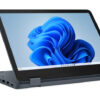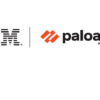Lenovo has officially acquired IBM’s x86 server business for US$ 2.1 billion, making the former the third-largest player in the $42.1 billion global x86 server market.
Lenovo is acquiring System x, BladeCenter and Flex System blade servers and switches, x86-based Flex integrated systems, NeXtScale and iDataPlex servers and associated software, blade networking and maintenance operations. IBM will retain its System z mainframes, Power Systems, Storage Systems, Power-based Flex servers, PureApplication and PureData appliances.
“With the close of the x86 acquisition, Lenovo will add a world-class business that extends our capabilities in enterprise hardware and services, immediately making us a strong number three in the global server market,” said Yang Yuanqing, chairman and CEO of Lenovo. “Now, our priorities are to ensure a smooth integration and deliver a seamless transition for customers. By combining Lenovo’s global reach, efficiency and operational excellence with IBM’s legendary quality, innovation and service, I am confident that we will have competitive advantages to help us drive profitable growth and build Lenovo into a global enterprise leader.”
The agreement builds upon a strong history of collaboration that began in 2005 when Lenovo acquired IBM’s PC business, including the ThinkPad line of PCs. Lenovo’s pending acquisition of Motorola Mobility from Google will make it the world’s third-largest smartphone maker, while further strengthening its position as a top-three maker of smart connected devices – PCs, tablets and smartphones.
“The acquisition is a clear demonstration of the confidence we have earned based on our consistent track record as a responsible global investor and as a secure and reliable technology provider,” said Gerry Smith, executive vice president of Lenovo Group and president of Enterprise Business Group and Americas Group. “Lenovo has big plans for the enterprise market. Over time, we will compete vigorously across every sector, using our manufacturing scale and operational excellence to repeat the success we have had with PCs.”
As described in the January announcement of Lenovo’s acquisition of IBM’s x86 server business, Lenovo and IBM have also established a strategic alliance where Lenovo will serve as an Original Equipment Manufacturer (OEM) to IBM and resell selected products from IBM’s industry-leading storage and software portfolio, including IBM’s entry and midrange Storwize storage product family, Linear Tape Open (LTO) products, and elements of IBM’s system software portfolio, including Smart Cloud, General Parallel File System and Platform Computing solutions. This strategic alliance means Lenovo can now offer these products as part of a more comprehensive enterprise IT solution, allowing it to support a greater range of customer needs in data centers.
Lenovo is buying IBM’s x86 server business intact and is committed to following the IBM x86 product roadmap, including Flex and x86-based PureFlex integrated systems. Lenovo will continue to drive innovation in these products. As previously disclosed, upon close, IBM will continue to provide maintenance delivery on Lenovo’s behalf for an extended period of time, so customers will experience a seamless transition with no change in their maintenance support.
The global team of the IBM x86 server business will be organized under Lenovo’s Enterprise Business Group. Adalio Sanchez led the x86 server business at IBM and will continue in this capacity at Lenovo, as senior vice president of Enterprise Systems, reporting to Gerry Smith.
The purchase price is approximately US$ 2.1 billion. Approximately US$ 1.8 billion will be paid in cash at closing after estimated adjustments and approximately US$ 280 million will be paid in Lenovo stock, based on the closing price of Lenovo’s stock on September 26, 2014. The transaction satisfied regulatory requirements and conditions, including clearance by the Committee on Foreign Investment in the United States (CFIUS), the European Commission and the Chinese Ministry of Commerce.
The transition began October 1 in countries that are part of the initial closing, which includes most major markets. The transaction is expected to close in most other countries later this year, with the few remaining countries following in early 2015.

















































































































